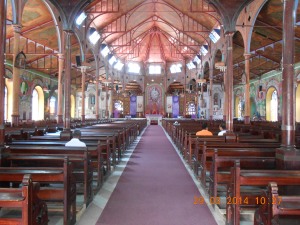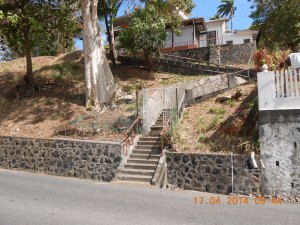Easter was a time of individual and collective reflection and family togetherness. It was a time when the institutionalized conscience of the nation, the Church, waxed hot and rhetorical in its condemnation of sin and the saving, sacrificial blood of Christ; a time when the Catholic Church re-established its dominance in the social matrix of the times—rebuking those who had veered from the straight and narrow path.

And the New Village Catholic women―along with those from elsewhere―dressed in their somber finery, attended Passion Sunday service. The men, carrying their palm fronds like pre-Reformation indulgences, congregated the following Sunday at the Roman Catholic Basilica for Palm Sunday mass.
On Good Friday, the Friday before Easter, the mass would be followed by a mock re-enactment of Christ’s forced march to Golgotha; Golgotha, in our case, was a small, concrete chapel overlooking Calvary road. The procession of devout, mostly female believers was led by Catholic priests, with one or more carrying wooden crosses. Once the procession reached its destination, the priests would begin a recitation of the “Stations of the Cross”. The Stations of the Cross verbally depicted the agony of Christ—from his trial to his crucifixion. The interval between each station was marked by prayers and hymns. In the end, the priests would bless the congregation, and the group of mourners would depart to their respective homes.


Author’s note: The preceding is an excerpt from the story “Easter” from the novella, “New Village” – now on Amazon Kindle.